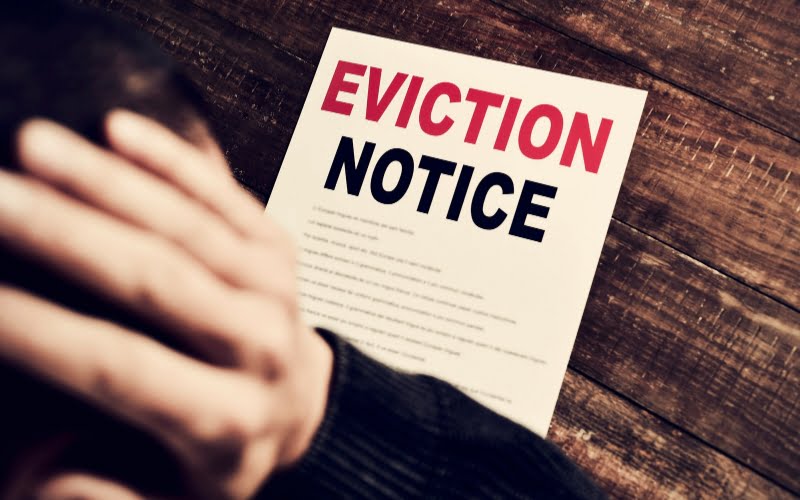Last Updated on March 18, 2024 by Kelvin Nielsen
The California 3-day notice to pay or quit is a legal document that landlords must serve tenants when looking to terminate their lease agreement for non-payment of rent.
Under California law (CA Civil Code 1940-1954.06), a landlord must have a legal ground to evict a tenant. In other words, you cannot just wake up one day and decide you no longer want to continue renting to the tenant.
Apart from non-payment of rent, other legal reasons for tenant eviction in California include violation of the lease, end of lease, no lease, and illegal activity. For each of these legal reasons, a landlord must follow a specific eviction process.
For an eviction process to be successful, an eviction notice must be drafted and served correctly to the tenant. If you fail to do this, the tenant may be able to use any defects on the notice as a legal defense to fight their eviction from the property.
In today’s blog, we’ll walk you through everything you need to know regarding the California 3-day notice to pay or quit. The following are answers to commonly asked questions on the topic.
What is the California 3-Day Notice To Pay Or Quit?
The California 3-day notice to pay or quit is a written legal document that a landlord can serve on a tenant who is late on paying rent. The notice gives a tenant 3 calendar days to pay the rent balance or move out of the property.
If the property vacates the unit, then great! However, if they choose not to pay or move out within the 3 days, then you may be able to file an eviction lawsuit against them.
What information must the California 3-day notice to pay or quit contain?
The California eviction notice for non-payment of rent must contain a certain set of important information to be effective. It must state things like:
- The name and address of the tenant
- The unit’s address
- The rent balance that the tenant owes
- The date that the tenant must have paid the rent balance to avoid an eviction
- A statement saying that the landlord may file an eviction lawsuit against the tenant if they don’t pay the rent due or move out within the notice period
How must the California 3-day notice to pay or quit be served on the tenant?
It’s the landlord’s responsibility to serve an eviction notice on a tenant. Under California law, a landlord must serve an eviction notice using any of the following methods.
- Hand a copy of the notice to the tenant in person.
- Hand a copy to a person of a suitable age, and then mail another to the tenant’s mailing address with a return receipt.
- Post a copy on the entry door, or any other conspicuous place at the premises, and mail another copy to the tenant via either registered or certified mail.
What is a defective 3 day notice California?
A 3-day notice to pay or quit can become defective in a number of ways. They include the following.
- The notice is not in writing. Eviction notices must not be oral or electronic.
- The notice lacks either the landlord’s signature or their authorized agent. An authorized agent can be a property manager, the landlord’s attorney, or anyone else you’ve authorized to serve an eviction notice.
- The eviction notice fails to mention the balance due. You must let the tenant know of the exact dollar amount they need to pay to void their eviction.
- The eviction notice fails to mention the effective date of lease termination.
- The notice is served to the tenant incorrectly. You have three options in this regard. That is, either to serve it in person, to post it in a conspicuous place and mail another copy to the tenant, or to leave a copy with a person of a suitable age
If the notice contains any of the aforementioned defects, the tenant may be able to fight their eviction by filing a motion to dismiss the case.
You may then need to restart the eviction process all over again, giving the tenant more time to live on the property.
What happens after a 3-day notice to pay or quit in California?
If the tenant fails to move out or pay the rent within 3 days of receiving the pay rent or quit notice, you can escalate the matter further by filing an eviction lawsuit in an appropriate court.
The following is a basic overview of the steps you must take to successfully evict the tenant from your rental property.
Step #1: File a lawsuit in a Superior Court of the county where your property is located.
In court, you’ll need to file an Unlawful Detainer lawsuit.
Make sure to properly fill in all the required information. Including, both parties’ contact info, the property’s location and address, tenancy type, and the ground for eviction. You may also need to attach a copy of the lease, eviction notice, and return receipt for the mailer.
Step #2: Have the tenant served with a copy of the Summons and Complaint.
You have up to 60 days to have the tenant served with a copy of the Summons and Complaint after filing the eviction complaint. If you don’t, you risk having the case dismissed by the court.
Once the service is done by a process server, the tenant will then have a chance to respond to the allegations. The tenant may try to fight their eviction by alleging any of the following.
- Their eviction was due to their race, color, religion, nationality, or any other protected class.
- The tenant withheld rent payments because of a repair issue.
- The eviction process was illegal. You tried to evict the tenant through illegal means, such as locking them out or removing their personal belongings.
- The eviction process had substantial errors.
- The tenant paid rent on time.
- You refused to acknowledge the rent payment as a retaliatory tactic against the tenant.
If the tenant fails to respond, you can ask the court for a default judgment without having to attend the hearing. However, if the tenant did respond, then you’ll need to file a hearing request.
Step #3: Attend the court hearing.
Typically, eviction hearings in California are held within 20 days of filing a hearing request. But when all is said and done, if the outcome of the hearing is in your favor, you’ll need to obtain a Writ of Execution.
Step #4: Removal of the tenant.
A Writ of Execution is the tenant’s final notice to leave the property. In California, a Writ of Execution gives a tenant up to 5 days to leave. After which, the sheriff will have to forcibly eject them and return possession back to the landlord.
Conclusion
A landlord must use a 3-day notice to pay or quit when looking to evict a tenant for nonpayment of rent in California. The notice gives a tenant only 3 calendar days to either pay the rent due or move out of their rented premises.
Please note that it’d be illegal to try to evict the tenant from the property using any other method other than the one prescribed by state law. Examples of illegal eviction methods include throwing out the tenant’s personal belongings, locking out the tenant, and shutting down a utility.
Disclosure: The content herein isn’t a substitute for advice from a professional attorney. It’s only meant to serve educational purposes. If you have a specific question, kindly seek expert attorney services.
Sources: California Landlord-Tenant Act, https://leginfo.legislature.ca.gov/, https://selfhelp.courts.ca.gov/, https://oag.ca.gov/,

Hi, I’m Kelvin Nielsen, an experienced landlord and accomplished real estate lawyer. My focus is on answering your questions about renting in the hopes of making your life as a renter or a landlord a bit easier.







